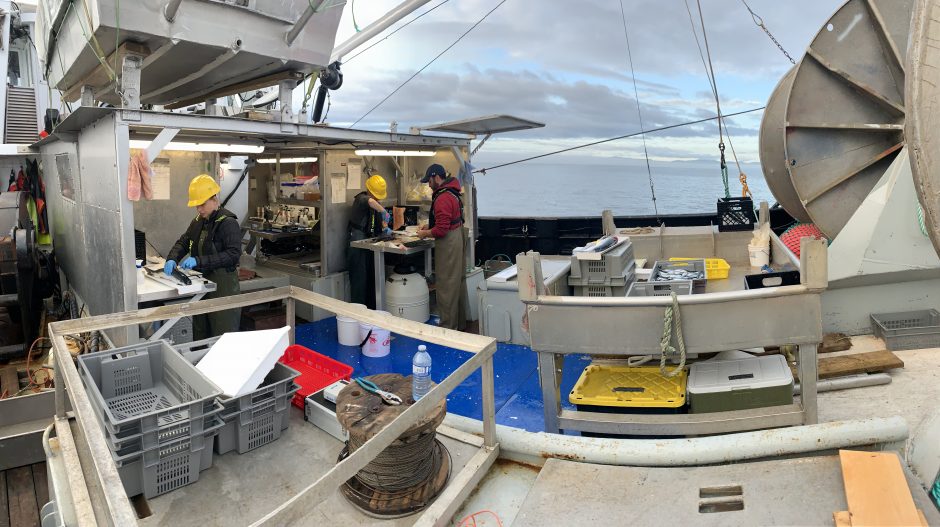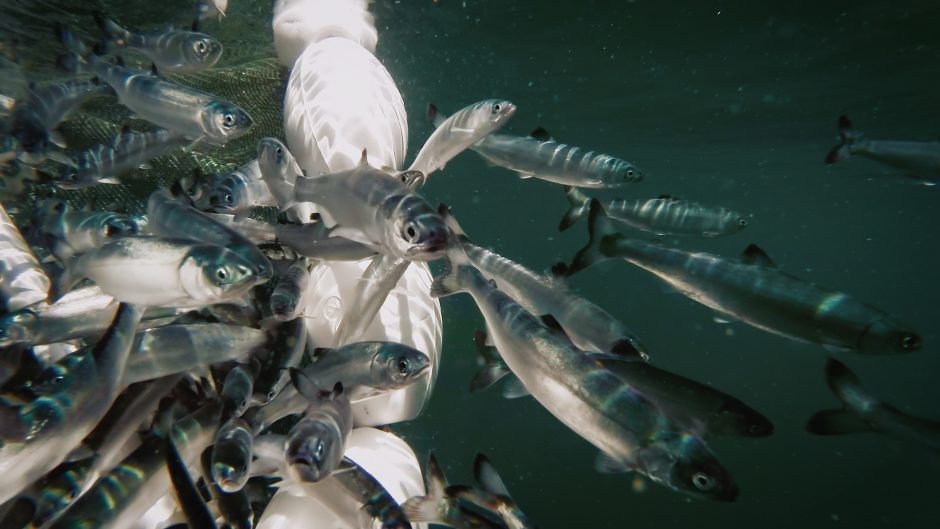Thiamine defficiency syndrome in British Columbia Chinook salmon

Thiamine (vitamin B1) deficiency complex (TDC) is a rapidly emerging issue impacting Chinook salmon in California and Alaska, but has received extremely limited evaluation in British Columbia. TDC may already be a factor in BC Chinook declines, and is expected to be a burgeoning issue under climate change. Thiamine is derived from prey in the marine environment and levels in predators vary in response to changing ocean conditions and diet. The Pelagic Ecosystems Lab conducting research to determine the status of thiamine deficiency in BC Chinook salmon by:
- determining thiamine levels in eggs and river entry fish from populations representative of life history types;
- establishing the thiamine attributes of Chinook prey species, and;
- evaluating links between thiamine status of Chinook and mechanisms of Thiamine deficiency complex.
This project is aiming to identify populations experiencing or at risk of Thiamine deficiency complex, guide realistic mitigation strategies in hatcheries, and inform prediction of future change.
Collaborators
Fisheries and Oceans Canada, Pacific Salmon Foundation
Late marine life history of Pacific Salmon

Maturing and adult Pacific salmon occupy diverse marine habitats, from the coastal ocean to high seas. Variation in habitat use is dependent on species and stock and has implications for food webs encountered, affecting prey species encountered and resource competition. Food web ecology during this life stage therefore has implications for the growth and nutrtional health of returning fish. The Pelagic Ecosystems Lab conducts research on:
- The spatial distribution of maturing and adult Pacific salmon;
- Foob web properties encountered by maturing and adult Pacific salmon;
- Competetive interactions among Pacific salmon and other pelagic species;
- Nutritional health of maturing and adult Pacific salmon.
Collaborators
Fisheries and Oceans Canada, International Year of the Salmon, NOAA, North Pacific Anadromous Fish Commission.
Early life history of Pacific Salmon

The first months after salmon enter the ocean are a critical period in their life history. Survival during this early marine phase in the coastal ocean may ultimately be responsible for inter-annual variability and long-term fluctuations in stocks. We research key aspects of early marine life history that are expected to impact the growth, health and ultimately survival of the juvenile fish:
- Spatial and temporal variability of marine habitat that juvenile salmon experience in coastal British Columbia;
- How ocean conditions drive the availability of zooplankton prey in space and time, and the quantity and quality of that zooplankton prey;
- The effect of prey timing, quantity, and quality on juvenile salmon growth;
- Juvenile salmon species specific feeding biology and competitive interactions;
- Pathogen and parasite infection dynamics;
- How migration behavior determines early marine life history experience;
- The interactive effects of the above on juvenile salmon mortality.
A summary of core project data can be found at https://hecate.hakai.org/shiny/JSP/
Collaborators
Hakai Institue, Universioty of Toronto, Pacific Slamon Foundation.